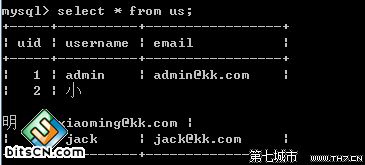Content:
In the digital age, social media platforms have become prime targets for cybercriminals. One such platform is WeChat, a popular messaging app in China and across Asia. Phishing attacks on WeChat are becoming increasingly sophisticated, making it crucial for users to be aware of the tricks employed by cybercriminals. This article provides a comprehensive technique collection to help you identify and avoid WeChat phishing attempts.
Recognizing Fake Profiles
The first step in protecting yourself from WeChat phishing is to be able to recognize fake profiles. Here are some common indicators:
- Inconsistent Profile Information: Be wary of profiles with mismatched names, photos, and other personal details.
- Spelling and Grammar Errors: Phishers often use poor grammar and spelling to make their messages appear less suspicious.
- Urgent Requests: If someone asks for urgent financial assistance or personal information, it's likely a phishing attempt.
- Unusual Links: Be cautious of any links sent via WeChat, especially if they lead to unfamiliar websites.
Verifying Requests for Sensitive Information
Phishers often try to trick users into revealing sensitive information such as passwords, bank account details, or personal identification numbers. Here's how to verify requests:
- Direct Communication: Always verify requests for sensitive information through direct communication with the person or organization making the request.
- Official Channels: Use official channels to confirm the legitimacy of any requests. For example, if a bank is asking for account details, contact them directly through their official WeChat account.
- Cross-Checking: If you're unsure about the legitimacy of a request, cross-check the information with the official website or contact information of the organization.
Using Two-Factor Authentication
Two-factor authentication (2FA) adds an extra layer of security to your WeChat account. Here's how to enable it:
- Settings: Go to your WeChat settings and select "Account Security."
- Two-Factor Authentication: Enable the 2FA feature and follow the instructions to set up a second form of verification, such as a text message code or an authentication app.
Being Mindful of Attachments and Links
Attachments and links are common phishing tools. Here's how to stay safe:
- Scan Attachments: Use a reliable antivirus software to scan attachments before opening them.
- Avoid Clicking Links: Be cautious when clicking on links, especially those from unknown senders. Hover over the link to see the actual URL before clicking.
- Verify Sources: Always verify the source of an attachment or link before interacting with it.
Educating Yourself and Others
Knowledge is power when it comes to phishing attacks. Here's how to educate yourself and others:

- Stay Informed: Keep up-to-date with the latest phishing techniques and scams.
- Share Knowledge: Educate friends, family, and colleagues about the dangers of phishing.
- Report Suspicious Activity: If you encounter a phishing attempt, report it to WeChat support and the relevant authorities.
Utilizing Security Tools
WeChat offers several security tools to help protect your account. Here's how to use them:
- Security Center: Access the security center within WeChat to manage your account settings and review recent activity.
- Privacy Settings: Adjust your privacy settings to control who can see your personal information and send you messages.
- Lock Your Account: If you suspect your account has been compromised, lock it immediately to prevent further unauthorized access.
By following these techniques, you can significantly reduce your risk of falling victim to WeChat phishing attacks. Remember, staying vigilant and informed is your best defense against cybercriminals.












